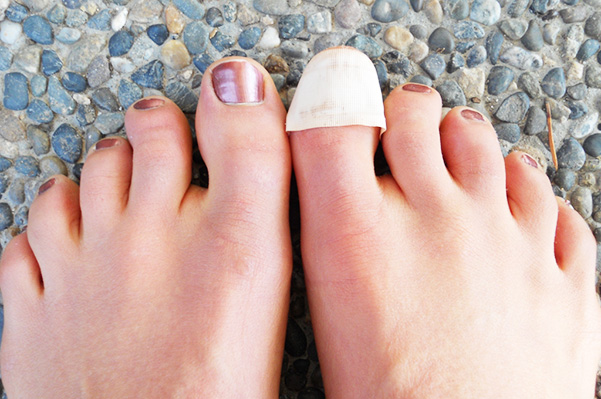There are many reasons why a toenail can get detached or torn. No matter the case, one thing remains true — it’s something that can be very painful. If you happen to have a detached or torn toenail, this article is for you. Below you will learn the steps to take to reduce complications and attain healing at a much faster rate.
After reading this article, share it on your various social media sites to let your family and friends know what to do in case they end up with a detached or torn toenail.
Before we check out some of the things you do, let us first get to know the reasons why a toenail can end up detached or torn. According to experts, some of the most common reasons include:
Injuries
Repeated stubbing of the toe can cause the toenail to get detached or torn. Your risk of ending up with such problem is higher if you have long toenails or you constantly wear tight footwear.
Fungal infection
The toenails are prone to ending up infected because the feet are warm and moist most of the time. Especially if fungi invade the nail bed, the infected toe nail may get detached.
Skin conditions
Are you aware that there are certain skin conditions that can also lead to a detached or torn toenail? Experts say that one of them is psoriasis.
Chemical exposure
It’s also not unlikely for you to end up with toenails that are detached or torn if you constantly apply nail polish remover (acetone) or other strong chemicals to your toenails.
Medications and treatments
According to doctors, there are certain medications that can cause detached or torn toenails. The same is true with certain medical treatments like chemotherapy.
Most of the time, a detached or torn toenail is something that can be treated at home. Here are some of the things that you should do when this very common matter strikes:
If the nail is still partly attached or entirely detached, grab a pair of small scissors and then carefully remove it. But if you leave it in place, that’s fine as it will fall off on its own once the new nail starts growing.
Reach for a nail file and gently file off rough or sharp edges. Otherwise, it can get caught in something like when putting on your clothes, causing the problem to worsen.
Not comfortable with trimming or filing your toenail that’s detached or torn? That’s okay. You may simply approach your doctor to have the job done for you.
After having the detached or torn toenail trimmed or filed, soak the affected toe in cold water for 15 to 20 minutes to help reduce pain and also to have the toenail that’s detached or torn softened.
Dry the affected toe with a clean piece of cloth or kitchen paper. Afterwards, apply a thin layer of petroleum jelly on the toe and then securely wrap in non-adhesive bandage. Repeat these procedures daily or as needed.
For the next 3 days, it’s important to fend off an infection. Such can be done by soaking the affected toe in 4 cups of warm water with 1 teaspoon of salt dissolved in it. Do this 2 to 3 times a day.
Keep on observing for changes. If it seems like the affected toenail is red, swollen and has pus in it, or it stays painful for days, make sure that you allow your doctor to see the problem.
If you suffer from diabetes, peripheral arterial disease or any known issue concerning your immune system, it’s also a good idea to consult your doctor about your detached or torn toenail.
